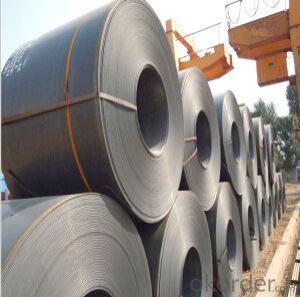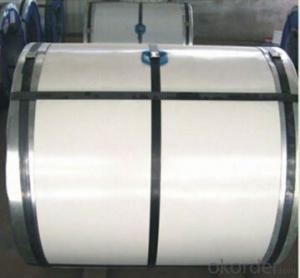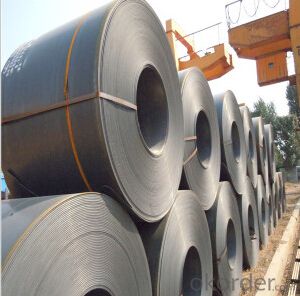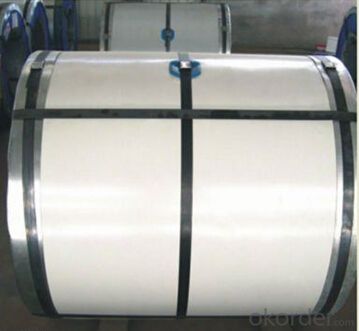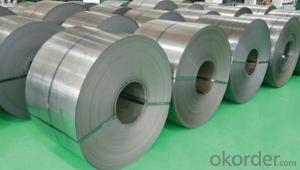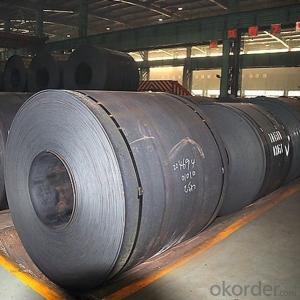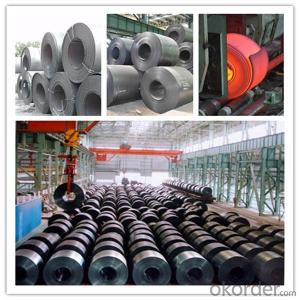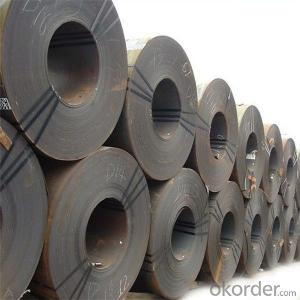Ss400 Hot Rolled Carbon Steel Coil for Construction
- Loading Port:
- Tianjin
- Payment Terms:
- TT OR LC
- Min Order Qty:
- 25 m.t.
- Supply Capability:
- 10000 m.t./month
OKorder Service Pledge
OKorder Financial Service
You Might Also Like
Description:
Model NO.:Sino Steel
Type:Steel Plate
Technique:Hot Rolled
Certification:ISO, SGS, BV, RoHS, IBR
Standard:ASTM, AISI, GB, JIS, DIN
Stock:Is Available
Surface Treatment:Oiled
Special Use:High-strength Steel Plate
Application:Ship Plate, Boiler Plate, Container Plate, Flange Plate
Thickness:0.1-200mm
Width:20-2000mm
Certificate:ISO, BV, CE, SGS, Sai,Ciq
Grade:Q195, Q235, A36, Ss400, Q345, St37-2, etc
Coil Weight:2-8ton
Surface:Oiled, Without Oil,Polished,Black
Export Markets:Global
Additional Info.
Packing:Standard Exporting Packing
Standard:SGS, BV, CE, ISO, SAI, CIQ
Origin:Tianjin
HS Code:72085200
Production Capacity:10000tons Per Month
Product Description
Prime Hot rolled carbon steel coil
Specifications:
1. Thickness: 0.1-200mm
2. Width: 20-2000mm
3. Length: 1-12m or as require
4. Grade: Q195, Q235, A36, SS400, Q345, ST37-2, etc
5. Coil ID: 508mm/610mm
6. Coil Weight: 2-8ton
7. Tolerance of thickness: +-0.03mm
8: Tolerance of width: : +/-5.00mm (aiming to +/-2.00mm)
9. Standard: ASTM, AISI, JIS, EN, DIN, GB, BS, SUS
10. Certificate: ISO, BV, CE, SGS, SAI
FAQ
1.What's your MOQ?
25MT, it is for one container.
2.Do you have QC teams?
Yeah, sure, our QC team is very important, they will keep the quality control for our products.
3. What's your normal delivery time?
Our delivery time about 10-20days for standard sizes, if you have other requirements like hardness and width ,it is about 20-40days. But don't worry ,we also try our best for the delivery time ,because time longer and our cost is higher.
4.Are the products tested before shipping?
Yes, all of our PPGI and GI was qualified before shipping. We test every batch every day
- Q: How are steel coils inspected for formability using forming tests?
- To assess their ability to be shaped into desired forms without any defects or failures, steel coils undergo inspections for formability through the use of forming tests. These tests are conducted to evaluate the mechanical properties of the material and determine if it is suitable for specific applications. Forming tests consist of subjecting the steel coil to different forming operations, such as bending, deep drawing, or stretch forming. The coil is typically cut into specific dimensions and then subjected to these operations using specialized equipment. The main objective is to replicate the actual forming process that the steel will experience in real-world applications. During the forming tests, several parameters are carefully monitored. These parameters include the amount of force or load applied, the rate of deformation, and the resulting strain or deformation experienced by the steel. Additionally, the response of the coil to these operations is observed, including any visible defects like cracks, fractures, or surface imperfections. By thoroughly analyzing the performance of the steel coil during the forming tests, various characteristics related to formability can be determined. These characteristics include the material's ability to resist deformation, its capacity to withstand strain without failure, and its tendency to exhibit defects under specific forming conditions. The results obtained from these tests provide valuable insights into the suitability of the steel coil for particular forming processes and applications. Furthermore, advanced techniques such as digital image correlation and strain analysis can be utilized to precisely measure and evaluate the distribution of strain across the surface of the steel coil. These techniques assist in identifying areas of the coil that experience higher strain and potential points of failure. In summary, the formability of steel coils is assessed through forming tests that simulate the actual forming processes they will undergo. These tests evaluate various formability characteristics, including the material's resistance to deformation and its likelihood of defects. The results obtained from these tests aid in determining the suitability of the steel coil for specific applications and guide the selection of appropriate forming parameters.
- Q: How are steel coils used in the production of marine vessels?
- Due to their strength, durability, and versatility, steel coils find extensive use in the production of marine vessels. These coils, typically made of high-quality steel, possess the ability to withstand harsh marine environments and resist corrosion. The construction of the hull is one of the primary applications of steel coils in marine vessel production. Welding together steel coils that have been formed into plates creates the hull structure. The coils' strength ensures that the hull can endure the extreme forces and pressures encountered during vessel operation, including rough seas and heavy cargo loads. Furthermore, steel coils are employed in the production of various components and fittings within marine vessels. These coils can be shaped, cut, and formed into different parts like bulkheads, decks, and superstructures. The versatility of steel enables manufacturers to create intricate shapes and structures necessary for the efficient and safe functioning of a marine vessel. Moreover, steel coils are also used for fabricating pipes and tubing systems within marine vessels. These pipes are crucial for tasks such as fluid and fuel transportation, as well as ventilation throughout the vessel. The strength and corrosion resistance of steel coils ensure that these pipes can endure the high pressures and corrosive nature of marine environments. Additionally, steel coils are utilized in the production of marine vessel equipment like winches, cranes, and anchor systems. The components demand a material with high strength that can withstand heavy loads and constant use. Steel coils provide the necessary strength and durability to ensure the reliable performance of these vital equipment. In conclusion, steel coils play a crucial role in the production of marine vessels. Their strength, durability, and versatility make them an ideal material for constructing the hull, manufacturing various components, fabricating piping systems, and creating equipment. The use of steel coils guarantees the safety, efficiency, and longevity of marine vessels, enabling them to navigate the challenging conditions of the open seas.
- Q: I work in a steel foundry 10-12 hours a day where we melt and pour stainless steel tubes. The pour temperature for some of them is very close to the boiling point of stainless steel (about 3800 degrees) because it has to be VERY liquid for the application we use it. Anyway, it does boil a little and we breath in the vapours which I can assure you ARE indeed vapourized stainless steel (it collects and cools on everything and makes a nice shiny coating). Ok, so to the question, does breathing vapourized stainless steel all day pose a health risk such as cancer? Anyone know? I'm just curious.
- you okorder
- Q: many sword sellers sell swords made of 440 and stainless, i know those are both totally **** for real swords. so are 1045, 1060, or 1095 good grades of steel for a sword?
- Carbon Steel is the most common, while most live-steel(designed for use) ready sword utilize on of the spring steels you mentioned. Hybrid steel like those used in the Slayer series seem neigh-indestructible. The steel should be strong enough to not notch on a strike, but flexible enough to flex when you bend it, lest it shatter on a hard blow.
- Q: What is the minimum temperature that steel coils can withstand?
- The minimum temperature that steel coils can withstand depends on the specific grade of steel and its intended application. However, in general, most steel coils can withstand temperatures as low as -40°C (-40°F) without significant damage or structural failure.
- Q: what is tool steel and does it function better than carbon or spring steel?
- NO. Tool steel is very hard and brittle. Carbon spring steel is better but rusts. Stainless steel is weather resistant. A mix like those for knives are good. For the ultimate, do the japanese way of folding it hundreds of times, then, use three different types of steel. For the center and the back a softer and flexible steel, for the edge hard to keep its edge, and an outer layer to take some weathering.
- Q: Can steel coils be used in the production of consumer goods?
- Consumer goods can indeed be produced using steel coils. In multiple industries, including automotive, construction, and manufacturing, steel coils are commonly employed as raw materials. Within the consumer goods sector specifically, steel coils can be utilized to manufacture a diverse array of items, spanning from appliances, furniture, and tools to packaging materials and even consumer electronics. The innate strength, durability, and adaptability of steel render it an optimal choice for fabricating consumer goods that necessitate stability, safety, and longevity. Furthermore, steel coils can be easily manipulated, molded, and shaped into distinct components or parts, enabling customization and design flexibility throughout the production process. Consequently, steel coils play an indispensable role in consumer goods production and find widespread use across various industries.
- Q: When I got my AR-15 I was told that I should get either get Brass or Steel Case ammo and stick with one or the other, I was wondering why? It surely wouldn't damage anything switching back and forth between the two would it? I got steel case ammo and I have stuck with It and probably will either way, I was just wanting to know it I ever wanted to get some Hornady's or somthing like that.
- Steel cases won't hurt your AR, they just don't expand to seal the chamber as well as brass cases, causing increased fouling of the chamber that leads to failures to extract. If you use steel cased, clean well, and use a chamber brush. You can switch back and forth without harm.
- Q: What are the common welding defects in steel coils?
- Some common welding defects in steel coils include lack of fusion, porosity, undercutting, and weld spatter.
- Q: What are the different methods of edge trimming for steel coils?
- There are several methods of edge trimming for steel coils, depending on the specific requirements and application. Some of the common methods include: 1. Slitting: This is one of the most common methods used to trim the edges of steel coils. It involves passing the coil through a set of circular knives that cut the edges into narrower strips. Slitting can be done in-line during the manufacturing process or as a separate operation. 2. Shearing: Shearing is another popular method used for edge trimming. It involves using a set of blades to cut the edges of the coil in a straight line. Shearing is often used when precise and clean cuts are required, and it can be done manually or with the help of automated machinery. 3. Laser cutting: Laser cutting is a more advanced method that uses a high-powered laser to trim the edges of steel coils. This method provides precise and smooth cuts, and it is often used when high accuracy and quality are essential. Laser cutting can be incorporated into the production line or performed as a standalone process. 4. Grinding: Grinding is a method that involves using abrasive wheels or belts to remove material from the edges of steel coils. It is commonly used to remove burrs, rough edges, or surface imperfections. Grinding can be done manually or with the help of automated machines, depending on the scale and complexity of the trimming process. 5. Waterjet cutting: Waterjet cutting is a method that utilizes a high-pressure jet of water mixed with abrasive particles to trim the edges of steel coils. This method is known for its versatility and ability to cut through a wide range of materials and thicknesses. Waterjet cutting is typically used when complex shapes or intricate designs need to be achieved. Overall, the choice of edge trimming method for steel coils depends on factors such as the desired accuracy, speed, complexity of the edges, and the specific requirements of the application. Different methods offer varying levels of precision, efficiency, and cost-effectiveness, allowing manufacturers to select the most suitable technique for their specific needs.
Send your message to us
Ss400 Hot Rolled Carbon Steel Coil for Construction
- Loading Port:
- Tianjin
- Payment Terms:
- TT OR LC
- Min Order Qty:
- 25 m.t.
- Supply Capability:
- 10000 m.t./month
OKorder Service Pledge
OKorder Financial Service
Similar products
Hot products
Hot Searches
Related keywords
